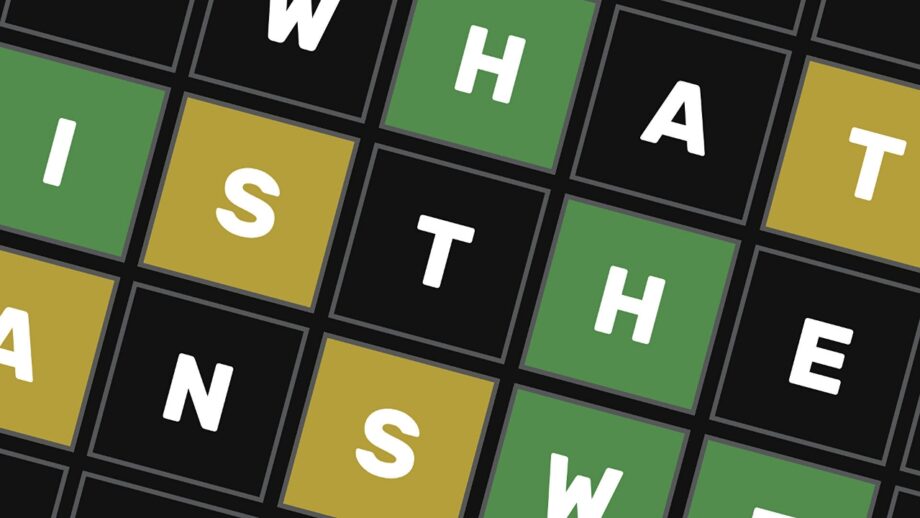Wordle has taken over Twitter, with the green and yellow boxes clogging up most people’s timelines. Due to its social character, this game that evaluates your vocabulary is very simple, tough, and competitive.
We’ve already covered what Wordle is, how to play it, and some other fundamentals, which you can find here. Even with these instructions in hand, you may find it difficult to guess the correct five-letter word in the six possibilities available.
Today, we’ll look at a few pointers to help you better plan your efforts and get to the perfect term in the shortest amount of time.
First guess
The majority of people will estimate number one with a random word, then number two with a green, yellow, and grey combination, and so on. However, this means you will squander one of your six chances, the most crucial of which is, in my opinion, the most vital.
For your first guess, choose a term with a lot of vowels, or a few common vowels combined with some commonly used consonants. In your first guess, stay away from letters like ‘X,’ ‘Q,’ and ‘Z.’
It’s possible that these are green letters for the word of the day, but keep in mind that the goal of your first opportunity is to limit your search. As a result, for your first guess, stay away from words with repetitive letters.
For my first guess, I went for ‘TABLE’ today. This is a fantastic word since it has both the letters ‘A’ and ‘E,’ which are both often used vowels. As you can see in the image below, I get one green and two yellow squares right away.
Second guess
This is where your contextual strategy game enters the picture. To figure out what the word might be, use the color codes from your first guess. Always use green letters from a prior attempt in the same position and yellow letters from a previous attempt in a new position.
Never again utilize greyed-out letters.
You’d be squandering an opportunity. Use the in-game keyboard to your advantage, since it will highlight any letters that are greyed out. Consider that these letters have been removed from your keyboard and you are no longer able to utilize them.
While you’re about it, see if you can spot any patterns in regularly used words. In English, for example, a ‘Q’ will almost always be followed by a ‘U,’ and ‘E’ and ‘A’ will almost always be in the ‘EA’ order rather than the ‘AE’ order (there could always be exceptions).
If you’re using yellow letters, don’t put them in a new area at random; instead, attempt to put them in places where they’re frequently seen. For example, letters like ‘Z’ are rarely found at the end of a sentence, but ‘E’ and ‘Y’ are common last letters.
Returning to today’s game, I’ll now look for words that begin with the letter ‘A’ and end with the letters ‘B’ and ‘L’. However, I’m aware that the letters ‘B’ and ‘L’ are unlikely to complete the word in that order. Instead, I’ll use ‘B’ as the first letter and ‘L’ in spot-3 to guess for ‘BALDY,’ without using any of the grey letters from chance one.
The Third Guess
From chance three onwards, you’ll use your vocabulary pattern knowledge in the same way you did in the second guess to earn additional green letters and, eventually, the correct word.
However, you will now employ what I refer to as the elimination approach, which is a common Sudoku tactic. It’s worth noting that by chance three or four, you might get certain yellow letters in several opportunities. As a result, we can eliminate these options and place these letters in only one or two remaining positions.
If there are any more blank spaces, use strategic vocabulary to figure out where the yellow letter should go next.
Returning to today’s word, you’ll notice that we have a ‘B’ at the start and an ‘A’ immediately next to it. However, because the letter ‘L’ has been yellow in two of the three remaining positions in the first two chances, you now know that it will occupy the last spot, effectively making ‘L’ the last letter of the word and a given green letter in the following opportunity.
Because the rest of the word is already taking shape as ‘BA L,’ you only have two more letters to predict.
While I’m inclined to go for ‘BAGEL,’ I must remember that the letter ‘E’ has already greyed out. Instead, I’ll go through my files looking for letters that I haven’t used yet, and that makes sense. Let’s have a look at BASIL.
Fourth guess
If you still haven’t guessed the correct word, utilize the remaining three opportunities solely for strategic elimination, keeping in mind the above-mentioned restrictions in the event of additional green or yellow letters.
As you can see from my assumption, the letters ‘S’ and ‘I’ are both grey, while the letter ‘L’ is green, as expected.
This is a good moment to check for any letters that appear twice in the term. Because Wordle doesn’t color code letters that appear twice, this will have to be done manually.
I’m going to try repeating letters now that no new letters appear to fit in. I’ll start with ‘A,’ because vowels are frequently repeated in the same word. As a result, my next guess will be ‘BANAL,’ in which I repeat the letter ‘A’ and add ‘N,’ an unused letter thus far.
As you can see in the example above, I predicted the correct word with minimal effort and random guesses, and I got it correctly with two opportunities to spare!

